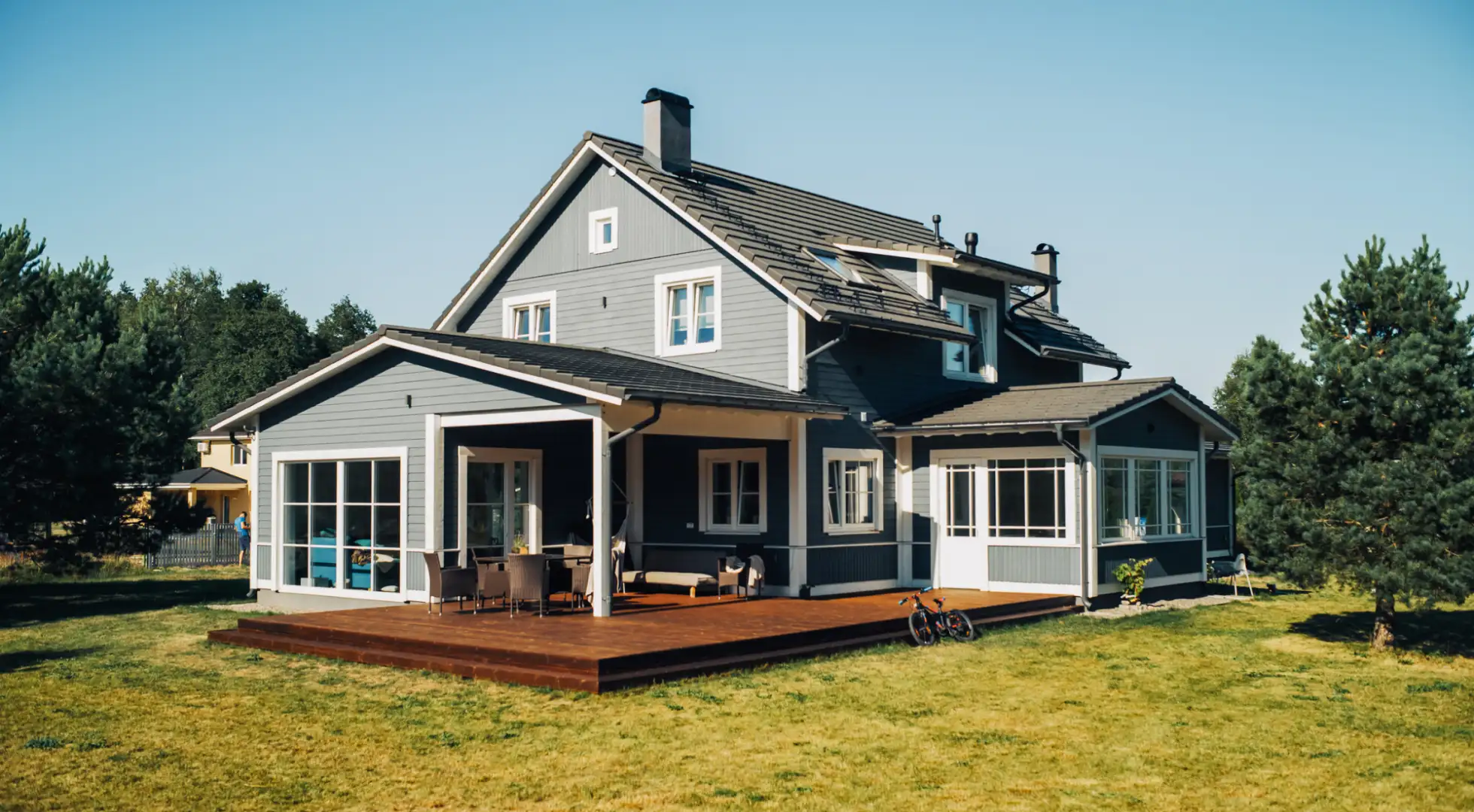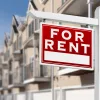FHA 203(b) Loan: Is It Different Than Standard FHA? What To Know

Homebuyers have a variety of mortgage options, including the FHA 203(b) – the standard FHA-backed loan. The 203(b) allows you to buy a home with a smaller down payment and more lenient credit standards than other common mortgages, making it a popular choice among first-time homeowners.
This guide covers everything you need to know about the FHA 203(b) loan program, including eligibility and appraisal requirements. We’ll also compare it to the FHA 203(k) loan as well as some other potential 203(b) alternatives.
Key Takeaways
The FHA 203(b) loan is the standard Federal Housing Administration (FHA) 3.5%-down mortgage.
FHA-approved lenders offer 203(b) loans to borrowers with a credit score of 580 and higher in most cases.
All FHA loans come with a 1.75% upfront mortgage insurance premium and an annual mortgage insurance premium of 0.55% for most buyers.
The FHA 203(k) loan is an FHA-backed alternative that lets you buy a fixer-upper or make home improvements before moving in.
What Is an FHA 203(b) Loan?
The FHA 203(b) is the Federal Housing Administration’s flagship loan program. It’s the most popular FHA mortgage option, so much so that you’ll commonly hear the 203(b) referred to simply as an “FHA loan” or “FHA mortgage.”
FHA 203(b) mortgages are not issued directly by the FHA but rather through a network of approved private lenders and financial institutions.
Since the federal government insures FHA 203(b) loans, lenders face less risk when offering these mortgages. This means relaxed eligibility requirements and an extended pool of approved applicants compared to non-government-backed alternatives.
With an FHA loan, borrowers can qualify to purchase a home with a down payment of just 3.5%. Similarly, credit score requirements – 580 in most cases – are lower for the FHA 203(b) program than for most other types of mortgages.
FHA 203(b) Loan Requirements & Eligibility
One of the biggest reasons the FHA 203(b) loan program is so popular is because it has lower qualifying requirements than most other types of mortgages. This means that borrowers with past credit problems or who have a higher level of debt may still be eligible.
It’s a common misconception that FHA 203(b) loans are only for first-time or lower-income homebuyers. While the FHA program does help both of those types of buyers obtain mortgages, anyone who meets the eligibility requirements can get a loan through the 203(b) program.
Some of the FHA 203(b) loan requirements that you’ll encounter include:
Credit Score
The typical 3.5% down 203(b) mortgage requires a credit score of at least 580. However, FHA guidelines allow borrowers with scores as low as 500 to purchase a home with 10% down, although not all lenders offer this.
Debt-to-Income (DTI) Ratio
Applicants can get approved for an FHA 203(b) loan with a debt-to-income ratio as high as 56.9%. If you have other debts or want to stretch your purchasing power as far as possible, the 203(b) program may be your best option.
Property Types
The FHA loan program is only open to borrowers who plan to reside in the home they're purchasing as their primary residence. You cannot use an FHA 203(b) mortgage to buy a second home or an investment property.
You can, however, buy a multi-unit rental property with up to four individual residences as long as you plan to live in one of the units full-time for at least a year.
Income and Employment History
Like most home loans, FHA 203(b) lenders want to see two years of steady and consistent income and employment history. You are typically required to submit current paystubs, W-2s, and filed tax returns. However, self-employed FHA borrowers face other requirements.
Mortgage Insurance Premiums
All FHA borrowers must pay for mortgage insurance on their loans. The upfront mortgage insurance premium (UFMIP) is typically due at closing and charged at 1.75% of the loan balance.
The ongoing annual mortgage insurance premium costs most borrowers 0.55% divided equally among their monthly payments.
FHA Loan Limits
The Federal Housing Administration caps all FHA mortgages at 65% of the conforming loan limit in most areas of the country. In 2025, this limit is $524,225 for most single-family homes.
Some high-cost areas have higher FHA loan limits, as much as $1.2 million in places like Glenwood Springs, CO or Alexandria, VA. You can check your local loan limits with the HUD lookup tool.
FHA 203(b) vs 203(k)
While the FHA 203(b) program is designed to help borrowers purchase move-in ready properties, there is another option for buyers who prefer a fixer-upper or to make significant changes or additions to an otherwise move-in ready home.
The FHA 203(k) is often referred to as an FHA rehab or renovation mortgage since it allows you to finance the cost of home improvements into your loan.
One of the most unique differences between the FHA 203(b) and 203(k) is that with the 203(k) loan, lenders base your home's value on its future estimated worth after work is complete. If you're purchasing a $300k home that will be worth $450k once you're done adding a bedroom and renovating the kitchen and other bathrooms, you'd be eligible to borrow based on the larger amount.
If you just need to make minor, non-structural changes to the home, you may want to consider the FHA Limited 203(k). The Limited 203(k) allows you to include up to $75,000 in repairs with your new mortgage as of November 2024.
Borrowers who only want to make minor energy-efficient improvements can apply for the FHA's Energy Efficient Mortgage (EEM) program. An EEM can be packaged with the standard 203(b) loan to fund up to 5% of the property's value in modifications.
203(b) Appraisal Requirements
One critical step in the borrowing process is the FHA 203(b) appraisal. An FHA-approved appraiser must assess all homes purchased with an FHA loan.
The 203(b) appraisal is more in-depth than the typical home valuation as it is necessary to both assess value and ensure that the home meets the FHA's minimum property requirements.
Because of this, you can expect to pay slightly more for an FHA 203(b) appraisal. According to HomeGuide, the average FHA 203(b) appraisal costs between $400 and $900, while a standard appraisal runs from $350 to $600.
The FHA's minimum property requirements are designed to protect homeowners and ensure a safe and habitable living environment. Some of these standards include:
All plumbing, electrical, and HVAC systems must be functional, appropriate for the home, and have reasonable future utility.
Roofing must effectively keep out moisture and have an estimated remaining life of at least two years.
The home and foundation must be free of any major structural problems.
There should be no evidence of active termite infestation or past unrepaired damage.
Homes built before 1978 cannot have peeling or chipping paint.
Basements should be free of moisture, dampness, and other issues that could threaten health and safety.
Homes cannot have environmental contaminants on the property or be located near hazardous waste sites.
FHA 203(b) Alternatives
The FHA 203(b) mortgage isn't the only low-down-payment loan available. Qualifying borrowers have alternatives, with some requiring even less down than the 203(b).
FHA 203(b) Alternatives | Down Payment | Great For |
HomeReady & Home Possible Loans | 3% | Lower-Income Borrowers |
Conventional 97 & HomeOne Loans | 3% | Well-Qualified First-Time Homebuyers |
VA Loans | 0% | Service Members and Veterans |
USDA Loans | 0% | Buyers Purchasing in Rural Areas |
HomeReady and Home Possible Loans
Fannie Mae HomeReady and Freddie Mac Home Possible loans are ideal alternatives for lower-income borrowers earning 80% or less of their area median income. Mortgages are available with just 3% down and a minimum credit score of 620.
Qualifying borrowers can receive reduced rates and private mortgage insurance (PMI) costs from the HomeReady and Home Possible programs. Plus, conventional loans have no UFMIP, and you're only obligated to pay the ongoing PMI until you reach 20% equity.
Very-low income earners – those making 50% or less of their area median income – can even qualify for a $2,500 down payment and a closing costs credit.
Conventional 97 and HomeOne Loans
First-time homebuyers with a credit score of at least 620 can use the Fannie Mae Conventional 97 and Freddie Mac HomeOne loans to purchase a property with a 3% down payment. There are no income limits with either of these programs, and higher-credit borrowers will likely be eligible for a lower APR than with an FHA 203(b).
Similarly, well-qualified first-time homebuyers who want to buy more than the FHA’s standard loan limit may qualify for a greater amount with a conforming loan, thanks to higher loan limits in most of the country.
VA 0% Down Loans
The US Department of Veterans Affairs has a 0% down VA loan program available to qualifying homebuyers, in most cases, meaning servicemembers on active duty or honorably discharged veterans. VA loans generally have some of the lowest interest rates on the market and do not require mortgage insurance, even if you have zero equity in your home.
However, VA loans come with a one-time funding fee of 2.15% for most borrowers who have never taken out a VA mortgage. The VA doesn't require a minimum credit score, although lender-set minimums typically range from 580 to 620.
USDA 0% Down Loans
USDA loans are available to buyers purchasing property in rural or some suburban areas. All USDA loans have upfront and ongoing costs similar to the FHA 203(b) mortgage insurance premiums, although the cost to borrowers is lower.
The USDA upfront guarantee fee is 1% of the total amount borrowed, while the ongoing annual fee equals 0.35% split evenly among the 12 annual payments.
Like the VA, the USDA publishes no required credit score for the loans it insures, but lenders often set their minimum at 640, which is necessary for the agency's automatic underwriting platform. However, some USDA mortgage providers are willing to manually underwrite loans for borrowers with lower credit scores.
Is an FHA 203(b) Mortgage Right for You?
THE FHA 203(b) loan program is an excellent way for homebuyers – especially first-time homeowners – to get approved with a less-than-stellar credit score or financial profile. With a credit of 580, you could be eligible to buy a home with just 3.5% down. However, well-qualified borrowers may find better rates through some 203(b) alternatives.
To find out if an FHA 203(b) mortgage is the right kind of loan for you – and if not, what other options you might have – browse through the current mortgage rates and apply with an FHA-approved lender.




